
|
You entered: impact crater
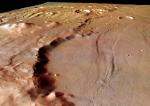 Crater Wall on Solis Planum
Crater Wall on Solis Planum
30.09.2004
This dramatic perspective view looks south-east along the wall of a large eroded impact crater on Solis Planum, bordering the mountainous Thaumasia region of Mars. Stretching for about 50 kilometers into the scene, the crater wall is around 800 meters high.
 Star Party on Planet Earth
Star Party on Planet Earth
4.04.2009
As twilight sweeps around planet Earth tonight (April 4), many amateur astronomers will set up their telescopes for a 24-hour global star party. The planetwide star party is part of 100 Hours of Astronomy (100HA), a project of the International Year of Astronomy 2009.
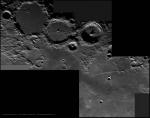 Ptolemaeus, Alphonsus and Arzachel
Ptolemaeus, Alphonsus and Arzachel
9.02.2007
These three ancient, large impact craters lie on the north eastern shores of Mare Nubium, the lunar Sea of Clouds. Along the top of the stark mosaic (left to right) are the namesakes of Ptolemaeus, Alphonsus and Arzachel.
 Galileo Photographs Ganymede
Galileo Photographs Ganymede
10.07.1996
Ganymede's surface is slowly being pulled apart. This photo of Ganymede was released earlier today by the Galileo team at NASA. The Galileo Spacecraft arrived at Jupiter in December 1995. In late June...
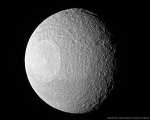 Odysseus Crater on Tethys
Odysseus Crater on Tethys
5.02.2017
Some moons wouldn't survive the collision. Tethys, one of Saturn's larger moons at about 1000 kilometers in diameter, survived the collision, but today exhibits the resulting expansive impact crater Odysseus. Sometimes called...
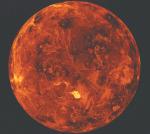 The North Pole of Venus
The North Pole of Venus
14.05.2003
If you could look down on the North Pole of Venus what would you see? The Magellan probe that orbited Venus from 1990 to 1994 was able to peer through the thick Venusian clouds and build up the above image by emitting and re-detecting cloud-penetrating radar.
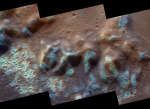 Unusual Hollows Discovered on Planet Mercury
Unusual Hollows Discovered on Planet Mercury
27.03.2012
What are those unusual features on planet Mercury? The slightly bluish tinge of features dubbed hollows has been exaggerated on the above image by the robotic MESSENGER spacecraft currently orbiting Mercury. The rounded depressions...
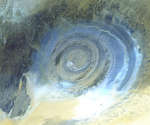 Earths Richat Structure
Earths Richat Structure
19.05.2013
What on Earth is that? The Richat Structure in the Sahara Desert of Mauritania is easily visible from space because it is nearly 50 kilometers across. Once thought to be an impact crater, the Richat Structure's flat middle and lack of shock-altered rock indicates otherwise.
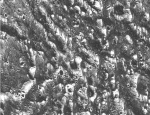 Ancient Cratered Plains on Ganymede
Ancient Cratered Plains on Ganymede
12.07.1996
The largest moon in the Solar System shows regions that are ancient and battered. The high density of craters demonstrate that patches of Ganymede are indeed billions of years old. This photo is one of a series released by NASA two days ago from the Galileo spacecraft orbiting Jupiter.
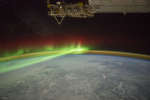 Aurora and Manicouagan Crater from the Space Station
Aurora and Manicouagan Crater from the Space Station
29.05.2018
How many of these can you find in today's featured photograph: an aurora, airglow, one of the oldest impact craters on the Earth, snow and ice, stars, city lights, and part of the International Space Station? Most of these can be identified by their distinctive colors.
|
January February March April |
|||||||||||||||||||||||||||||||||||||||||||||||||